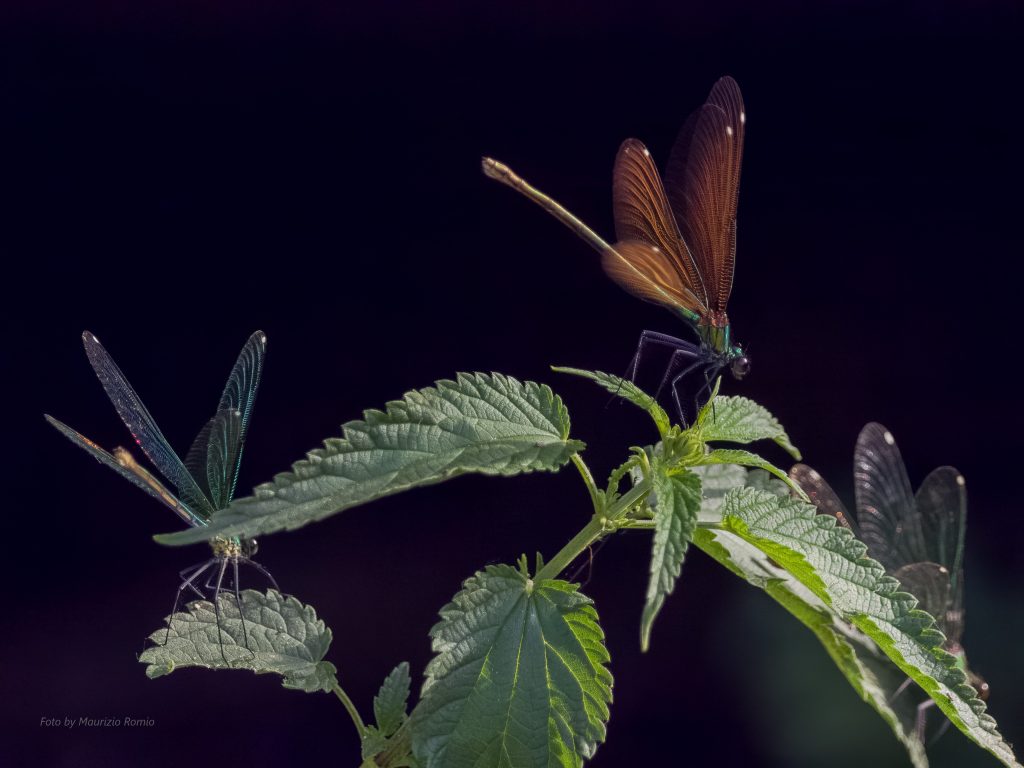
Che cos’è un biotopo?
La parola deriva da due parole greche, “Bios” che significa “Vita” e “Topos” che significa “Posto”.
In biologia con il termine biotopo si identifica un’area ambientale specifica in cui vive una determinata specie animale o vegetale o convivono più specie diverse. In quest’area le condizioni fisiche e ambientali rimangono sostanzialmente inalterate nel corso del tempo permettendo alle specie autoctone di vivere e riprodursi.
Secondo questa descrizione possiamo allora riferirci con il termine “biotopo” all’ambiente acquatico di roggia Contarina, una roggia che attraversa il Comune di Costabissara in provincia di Vicenza.
Come specie autoctone di roggia Contarina in località Fornace indico la colonia di libellule che da sempre ho visto esistere in questo tratto di roggia.
Ma di quale specie di libellule si tratta?
Sono libellule della specie “Calopteryx virgo” e “Calopteryx splendens”. Sono libellule dai colori sgargianti che spaziano nel caso dei maschi dal blu metallico al violaceo mentre nel caso degli esemplari femmina dal verde al bronzo. Sono libellule indicate anche con il termine “Damigelle d’acqua”, per il loro volo leggero e graziato.
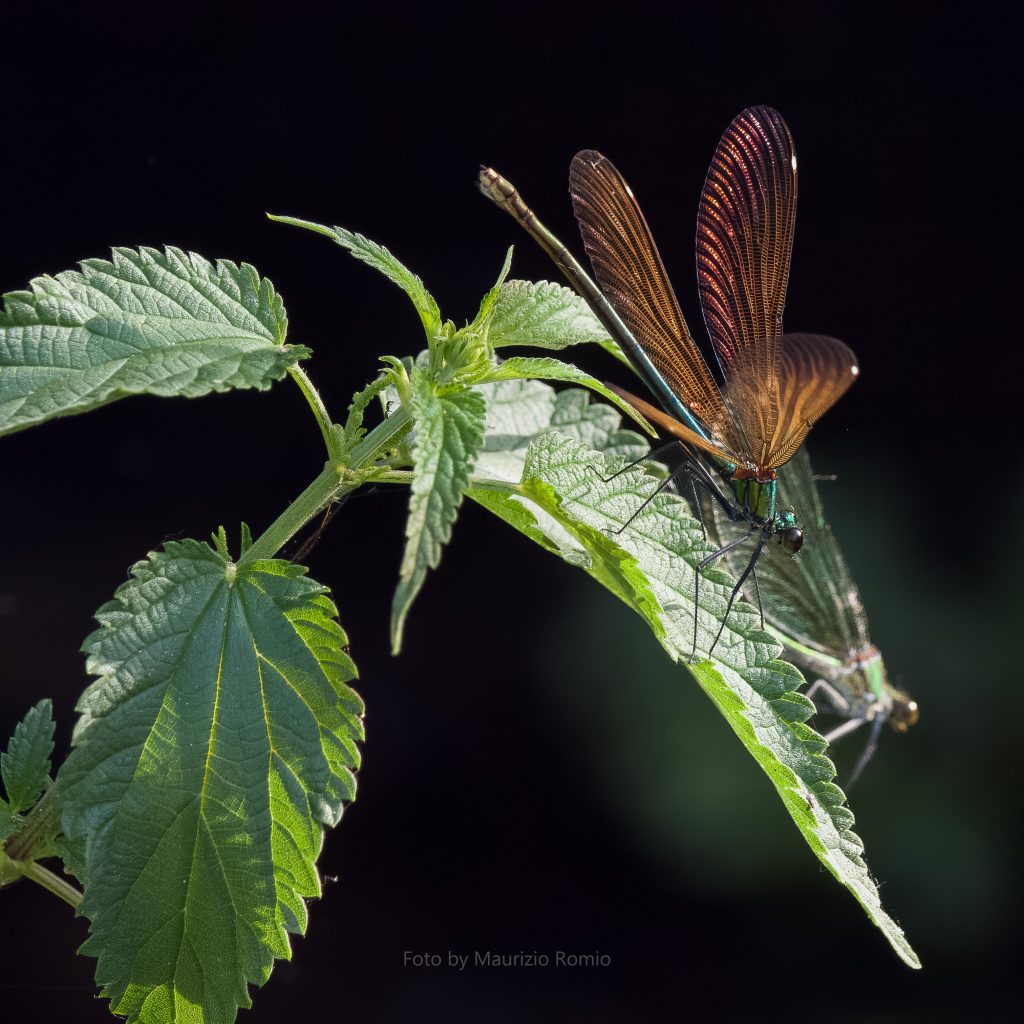
Una differenza che si può facilmente notare tra le due specie, Calopteryx virgo e splendens, la troviamo nella colorazione delle ali degli esemplari maschi. Ad esempio nella specie “Calopteryx virgo” il colore blu delle ali dei maschi è uniforme mentre nella specie Calopteryx splendens la colorazione blu la si nota in particolar modo a partire dalla metà e fino alla parte finale delle ali mentre è assente nella parte iniziale.
Sono specie che prediligono gli ambienti d’acqua corrente, poco inquinati e ricchi di ossigeno. Da sottolineare che alcuni popoli Nativi Americani indicano le libellule come il simbolo dell’acqua pura.
Le libellule hanno un sistema alare molto efficace che permette loro di librarsi in aria rimanendo ad esempio ferme in un punto. Per questa loro particolarità sono anche simbolo di equilibrio. Hanno due paia di ali la cui membrana è rinforzata da una fitta rete di vene. Favorite dalla loro destrezza nel volo sono formidabili cacciatrici di zanzare.
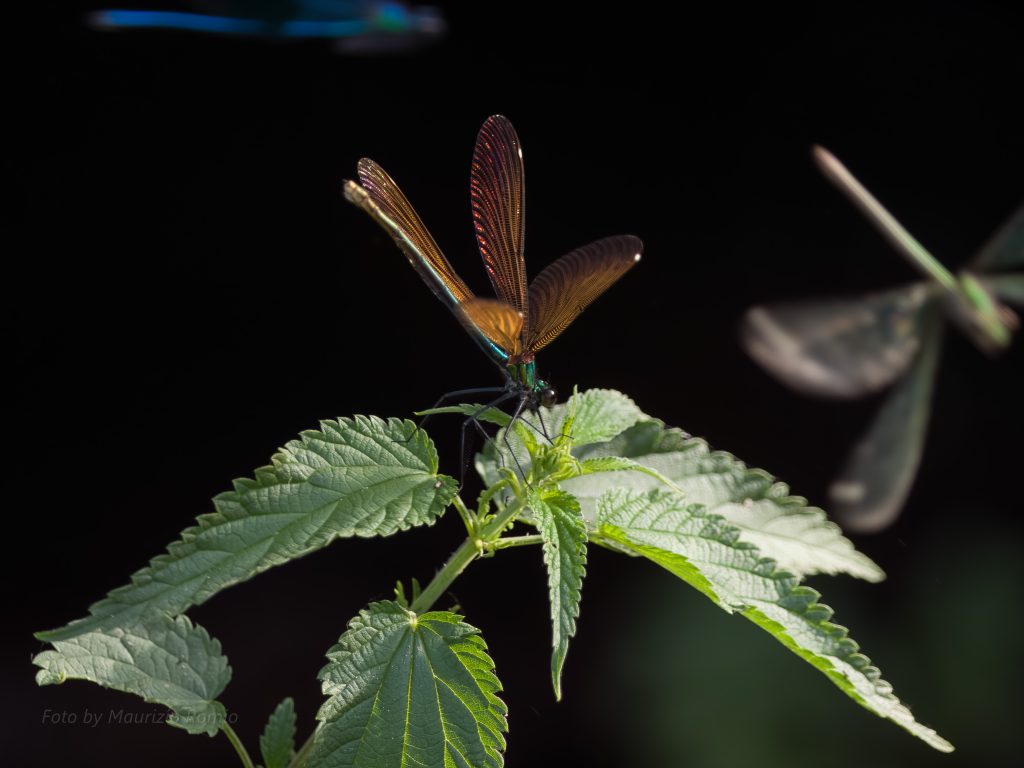
Le libellule della specie Calopteryx virgo e Calopteryx splendens, molto diffuse in passato, al giorno d’oggi stanno diventando una rarità. Dette anche “libellule di acqua corrente” sono quasi scomparse in molte regioni italiane a causa della distruzione degli ambienti idonei al loro sviluppo.
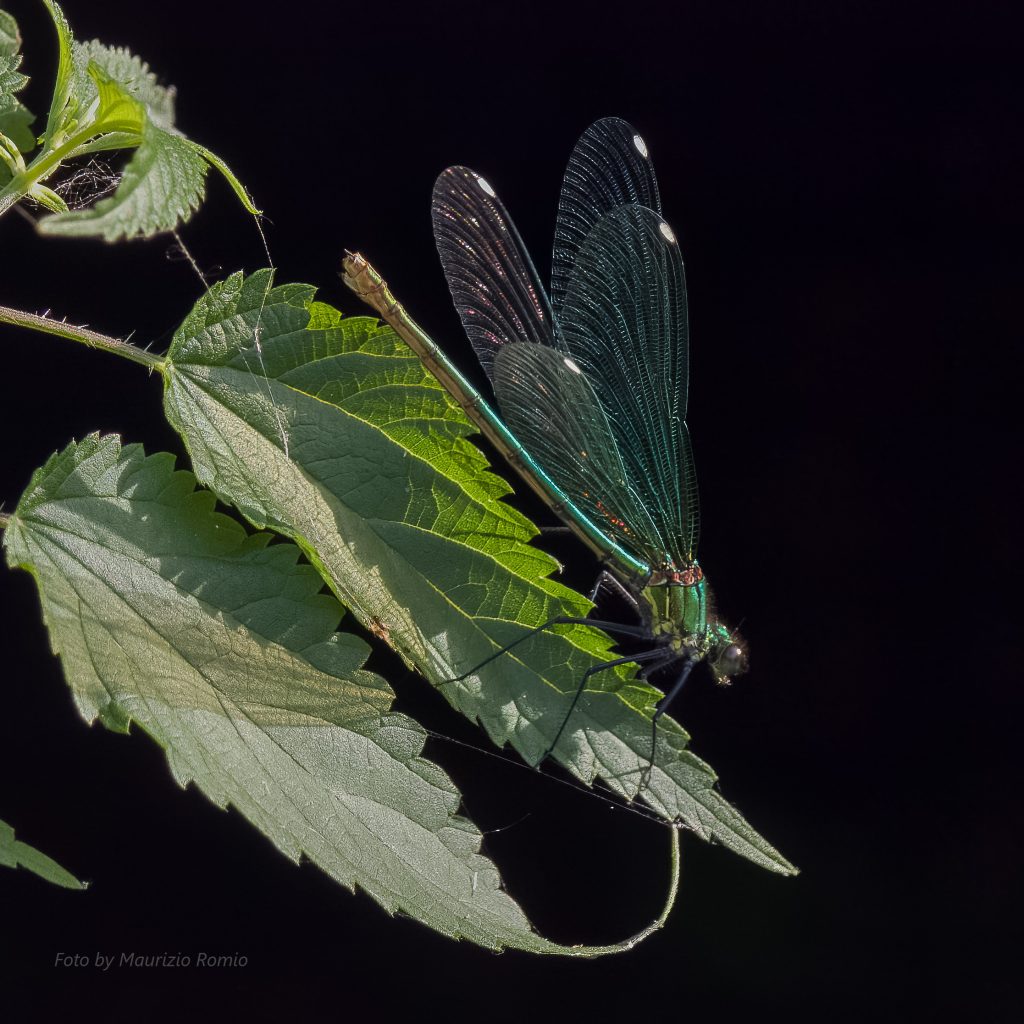
Il ciclo vitale delle libellule è il seguente: la femmina, a seconda della specie, depone le uova fecondate in acqua o le inserisce all’interno del tessuto immerso delle piante acquatiche. Le uova si schiudono e nasce la larva che rimane e si sviluppa in acqua. Giunta alla maturità la larva esce dall’acqua e si trasforma, attraverso la metamorfosi, in insetto aerobico alare. Il ciclo vitale della libellula si conclude in quest’ultimo periodo vissuto all’aria aperta. Da lì a poche settimane la libellula morirà, giusto dopo aver avuto il tempo per l’accoppiamento e il deposito delle uova fecondate. Ed è così che per la libellula il ciclo della vita si ripete… e questo fino a quando il suo ambiente naturale glielo consentirà.
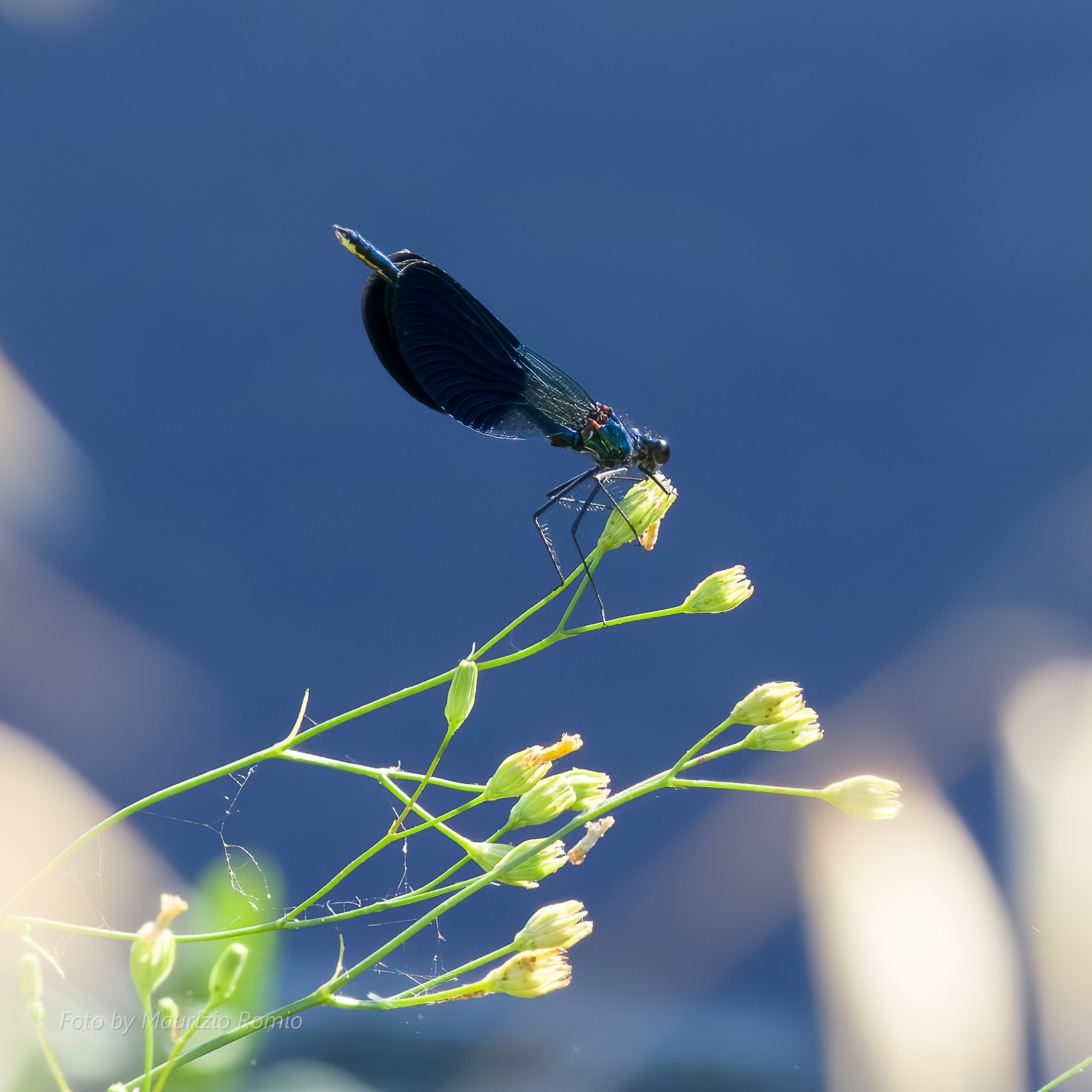
(Note: prosegue il mio apprendimento all’uso del super telefoto zoom micro quattro terzi Olympus 100-400 f5.00-6.3 IS. Le foto pubblicate in questo post sono state scattate a mano libera con una fotocamera Olympus OM-D E-M10 MARK III abbinata a questo super tele obiettivo zoom Olympus. Le foto che seguono sono state scattate con lo zoom alla massima estensione di 400 mm, lunghezza focale equivalente nel formato full frame 35 mm a 800 mm).
Altri esemplari fotografati lungo le sponde di roggia Contarina in località Fornace:
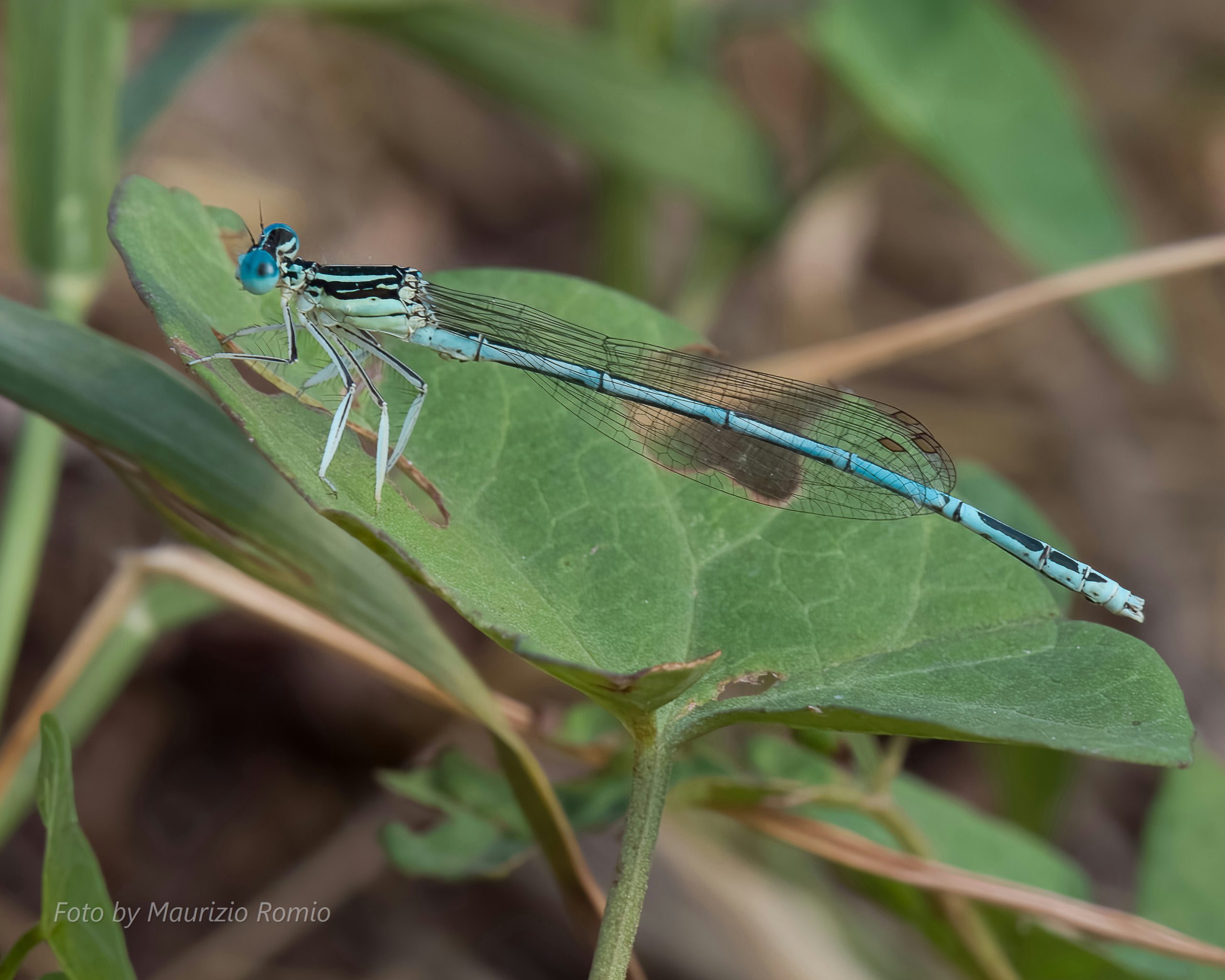
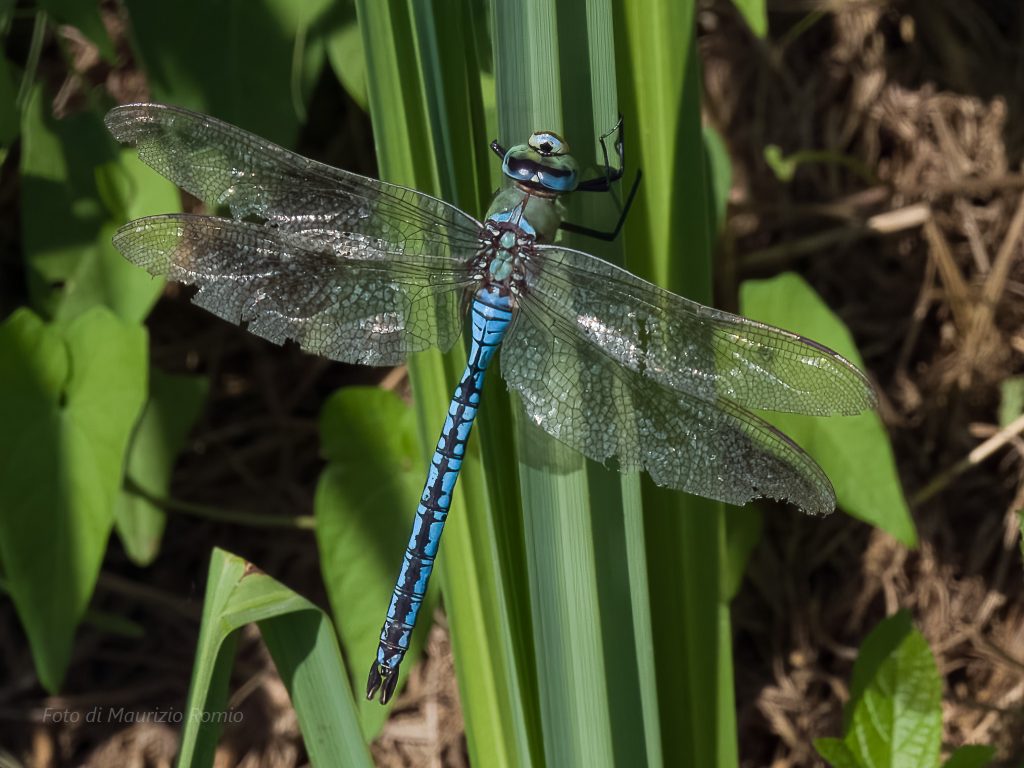
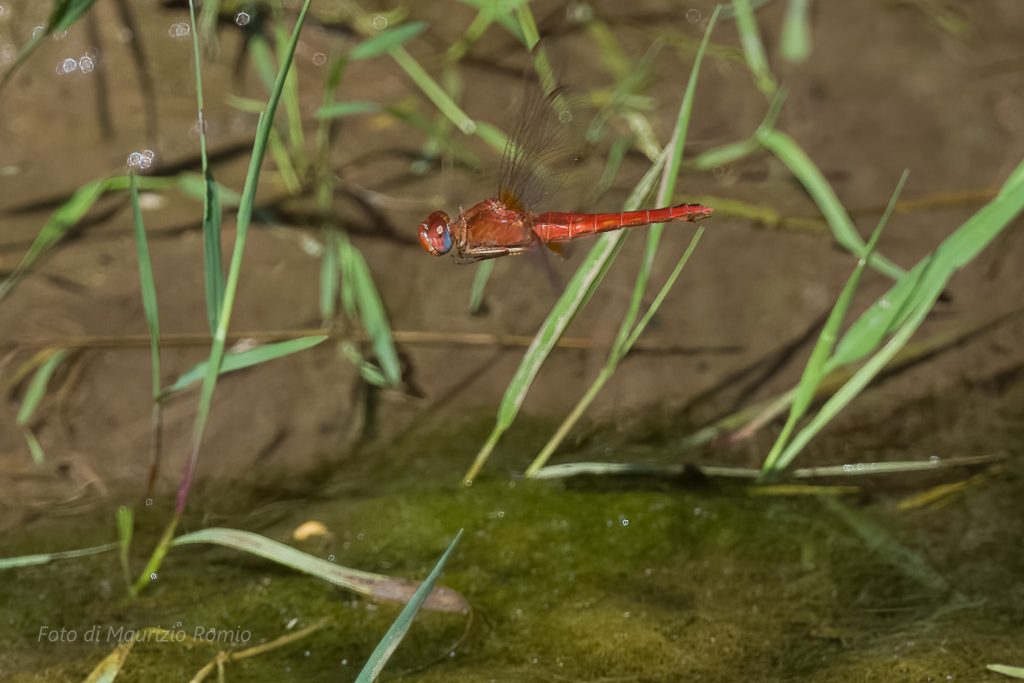
Questo è un esempio di omocromia, somiglianza di colore. La femmina fotografata presenta un colore rosso somigliante a quello del maschio. La femmina normalmente è di colore bruno giallastro. Foto Maurizio Romio (velocità otturatore 1/2500 sec; apertura f6.3; lunghezza focale 400 mm formato micro quattro terzi/800mm formato in pellicola 35 mm)
The dragonflies of the Roggia Contarina biotope
What is a biotope?
The word comes from two Greek words, “Bios” which means “Life” and “Topos” which means “Place”.
In biology, the term biotope identifies a specific environmental area in which a certain animal or plant species lives or where several different species coexist. In this area, the physical and environmental conditions remain substantially unchanged over time, allowing native species to live and reproduce.
According to this description, we can then refer with the term “biotope” to the aquatic environment of the Contarina canal, a canal that crosses the Municipality of Costabissara in the province of Vicenza.
As a native species of Contarina canal in the Fornace area, I indicate the colony of dragonflies that I have always seen exist in this stretch of canal.
But what species of dragonflies are we talking about?
They are dragonflies of the species “Calopteryx virgo” and “Calopteryx splendens”. They are dragonflies with bright colors ranging in the case of the males from metallic blue to purple while in the case of the females from green to bronze. They are dragonflies also referred to with the term “Water damsels”, due to their light and graceful flight.
A difference that can be easily noticed between the two species, Calopteryx virgo and spendens, is found in the coloration of the wings of the male specimens. For example, in the species “Calopteryx virgo” the blue color of the wings of the males is uniform while in the species Calopteryx splendens the blue color is particularly noticeable starting from the middle and up to the final part of the wings while it is absent in the initial part.
They are species that prefer flowing water environments, which are little polluted and rich in oxygen. It should be emphasized that some Native American peoples indicate dragonflies as the symbol of pure water.
Dragonflies have a very effective wing system that allows them to hover in the air and for example remain stationary in one point. For this particularity they are also a symbol of balance. They have two pairs of wings whose membrane is reinforced by a dense network of veins. Favored by their dexterity in flight, they are formidable hunters of mosquitoes.
Dragonflies of the species Calopteryx virgo and Calopteryx splendens, very widespread in the past, are now becoming a rarity. Also known as “dragonflies of running water” they have almost disappeared in many Italian regions due to the destruction of the environments suitable for their development.
The life cycle of dragonflies is as follows: the female, depending on the species, lays the fertilized eggs in water or inserts them inside the immersed tissue of the aquatic plants. The eggs hatch and the larva is born, which remains and develops in the water. Having reached maturity, the larva comes out of the water and transforms itself, through metamorphosis, into an aerobic winged insect. The life cycle of the dragonfly ends in this last period lived in the open air. Within a few weeks, the dragonfly will die, just after having had time for mating and depositing the fertilized eggs. And this is how the cycle of life repeats itself for the dragonfly…
(Notes: my learning to use the Olympus 100-400 f5.00-6.3 IS, super telephoto zoom micro four thirds IS combined with my Olympus OM-D E-M10 MARK III, continues. The photos published in this post were taken hand-held with an Olympus OM-D E-M10 MARK III camera paired with this Olympus super telephoto zoom lens.
